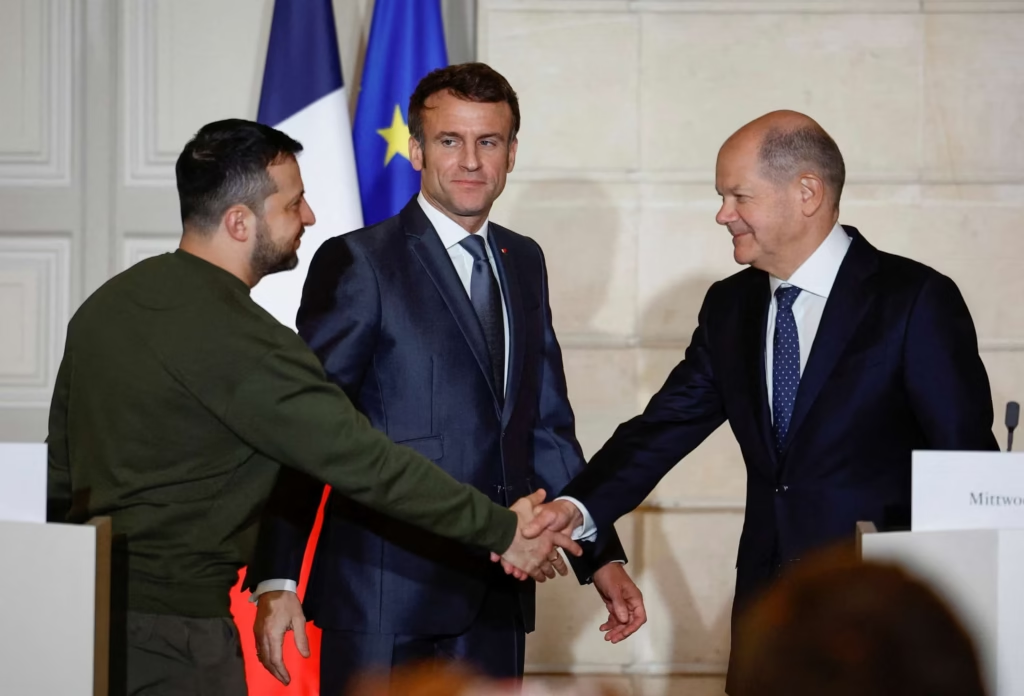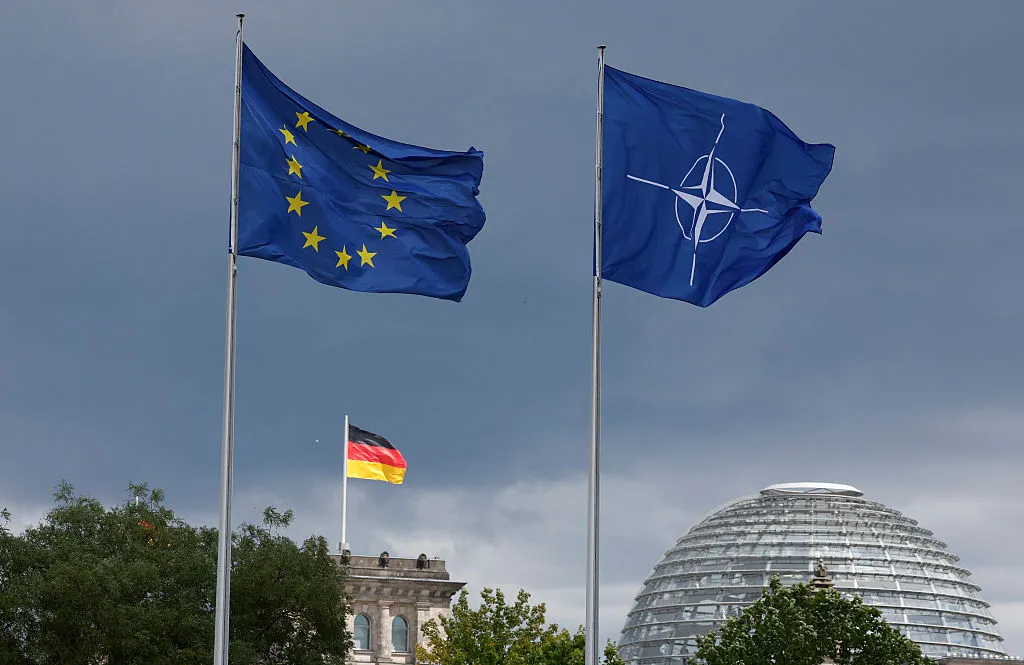Poland Builds a “Drone Wall” to Shield Its Borders From the Russian Threat

Poland is spearheading one of Europe’s most ambitious defense initiatives — a massive “drone wall” along its eastern border aimed at countering rising threats from Russia and its allies. The project, which combines surveillance, electronic warfare, and AI-enabled unmanned systems, marks a major step in Warsaw’s ongoing military transformation and its determination to become NATO’s eastern stronghold.
A Strategic Shield Against Hybrid Warfare
The concept of a “drone wall” reflects a new reality of modern conflict — one defined not only by tanks and missiles, but by cheap, ubiquitous drones capable of reconnaissance, sabotage, and precision strikes. Polish officials say the wall will stretch along the borders with Russia’s Kaliningrad enclave, Belarus, and Ukraine, creating a digital barrier capable of detecting and neutralizing aerial and ground-based threats in real time.
Deputy Prime Minister and Defense Minister Władysław Kosiniak-Kamysz described the plan as “a comprehensive defense ecosystem integrating drones, sensors, and countermeasures into one operational network.” He added, “The lessons from Ukraine are clear — whoever dominates the drone space controls the battlefield.”
Inspired by Ukraine’s Frontline Innovations
Warsaw’s initiative is deeply influenced by Ukraine’s battlefield experience. Over nearly three years of war, Ukrainian forces have demonstrated the decisive role of unmanned systems in intelligence gathering, artillery correction, and direct assault missions. Both sides — Ukrainian and Russian — now deploy thousands of drones daily, with innovations in electronic warfare, swarm tactics, and AI-assisted targeting transforming the nature of combat.
Poland has closely studied these developments. Since 2023, the country has accelerated procurement and local production of unmanned aerial vehicles (UAVs) and counter-drone technologies. The new wall will reportedly feature early-warning radar arrays, acoustic sensors, and AI-driven signal processing systems that can identify and jam hostile drones within seconds.
“This will not be a physical wall like the one on the southern U.S. border,” explained a senior defense official. “It’s a virtual wall — a multi-layered defense grid designed to detect, track, and eliminate threats before they enter Polish airspace.”
A Multinational Defense Network
Poland’s defense ministry has confirmed that the drone wall will be developed in coordination with the Baltic states — Lithuania, Latvia, and Estonia — which share similar security concerns regarding Russia and Belarus. Together, these countries envision a “Baltic Shield,” integrating surveillance data and air defense systems to create a continuous line of protection across NATO’s eastern frontier.
“This is about more than one country’s security,” said Lithuania’s Defense Minister Arvydas Anušauskas. “It’s about building a collective deterrent that makes hybrid attacks — drones, cyber, or otherwise — ineffective across the entire region.”
Countering the Belarus and Kaliningrad Threats
The initiative comes amid growing tensions along Poland’s borders. Belarus, a close ally of Moscow, has allowed Russian forces to operate within its territory and continues to conduct hybrid provocations — including pushing migrants toward EU borders and engaging in electronic warfare testing.
Meanwhile, Kaliningrad remains one of the most militarized regions in Europe, home to advanced Russian missile systems, radar stations, and naval assets. Intelligence reports indicate increased Russian drone activity in the Baltic Sea region, including reconnaissance flights near NATO borders.
“Kaliningrad is not just a military outpost; it’s a hub for hybrid operations,” said a Polish intelligence analyst. “The drone wall will give Poland early visibility into potential incursions or reconnaissance missions, significantly improving our response time.”
Investment in Defense Tech and Domestic Industry
Warsaw’s defense modernization strategy has already made Poland one of the top defense spenders in NATO, with military expenditure exceeding 4% of GDP in 2025. A large portion of that budget is now being directed toward advanced technologies, including autonomous systems, electronic warfare equipment, and AI-based command platforms.
Poland’s state-owned defense firms — such as WB Group and PIT-RADWAR — are expected to play leading roles in the project, alongside international partners from the U.S., South Korea, and Israel. The government hopes that developing domestic capabilities will reduce dependency on foreign suppliers while stimulating the country’s growing tech industry.
“The drone wall isn’t just a military project — it’s an industrial one,” said an executive at WB Group. “It will create thousands of jobs, attract investment, and position Poland as a European hub for drone defense technologies.”
Challenges Ahead: Cost, Coordination, and Cybersecurity
Despite the strategic importance of the project, experts warn of potential challenges. Building a seamless drone defense network across multiple countries requires significant coordination and standardization. Cybersecurity will also be critical — any vulnerability in software or communications could be exploited by adversaries.
Moreover, the costs are expected to be substantial. While the Polish government has not disclosed an exact budget, defense analysts estimate that full deployment could require several billion euros over the next five years.
“Technology alone won’t guarantee security,” said a Warsaw-based defense researcher. “It must be backed by consistent training, maintenance, and international collaboration. The system has to evolve faster than the threat itself.”
A Message to Moscow — and to Europe
The drone wall represents not only a defensive measure but also a symbolic statement of resolve. It signals that Poland and its Baltic neighbors are prepared to lead Europe’s adaptation to new forms of warfare — ones where agility, data, and automation matter as much as manpower and armor.
“Every drone neutralized, every signal intercepted, is a small victory in the larger struggle for European stability,” said a NATO official familiar with the project. “What Poland is doing today could set the standard for NATO border defense tomorrow.”
Conclusion: The Future of Deterrence
As Europe faces the most volatile security environment since the Cold War, Poland’s drone wall embodies the continent’s strategic pivot toward high-tech deterrence. It’s a clear acknowledgment that future conflicts may be fought not just with soldiers and missiles, but with algorithms, sensors, and silent machines hovering in the sky.
For Poland, the initiative is both a necessity and an opportunity — to safeguard its sovereignty, strengthen its role within NATO, and redefine what modern border defense looks like in an age of drones and digital warfare.




















